All about the keyboard. ASUS laptop keyboard keys. Basic key combinations.
In many of our articles, you can see text like: Win + R.
This text means that you need to press the key combination with Windows logo and letters R.
Keyboard shortcuts are combinations of two or more keys that can be pressed to perform tasks that typically require a mouse or other pointing device.
A keyboard is a device through which we can enter letters, symbols and numbers into a computer. Laptop computers built into the case, and on desktops, the keyboard is wired. The keyboard consists of approximately 100 keys, grouped according to the various functions they perform. Each key is associated with one or more symbols, functions, or commands. Although the keyboard may have different characteristics, they are formed from the same key groups. There are four main sections on the keyboard.
"Hot keys" for working with files
Four main divisions. Function Keys: Used in applications to execute some commands at a faster speed. Keyboard: Consists of numbers, letters and symbols, as well as some keys with special functions... These latter are those keys that, when pressed next to another, indicate that the latter is showing different characters on the screen, which may have the same key.
This list is more complete, most of the keyboard shortcuts are valid for others. operating systems Windows family.
The most commonly used keyboard shortcuts are as follows.
Keyboard shortcuts for working with text.
| Keys | Action |
|---|---|
| Ctrl + A | Select all text. |
| Ctrl + C (or Ctrl + Insert) |
Copy the selected text fragment. |
| Ctrl + X | Cut the selected text fragment. |
| Ctrl + V (or ⇑ Shift + Insert) |
Paste the selected text fragment. |
| Ctrl + ← | Move the cursor to the beginning of the previous word. |
| Ctrl + → | Move the cursor to the beginning of the next word. |
| Ctrl + | Move the cursor to the beginning of the previous paragraph. |
| Ctrl + ↓ | Move the cursor to the beginning of the next paragraph. |
| ⇑ Shift + → | Select text forward character by character. |
| ⇑ Shift + ← | Select text back character by character. |
| Ctrl + ⇑ Shift + → | Select text from the cursor position to the beginning of the next word. |
| Ctrl + ⇑ Shift + ← | Select text from the cursor position to the beginning of the previous word. |
| ⇑ Shift + Home | Select text from the cursor position to the beginning of the line. |
| ⇑ Shift + End | Select text from the cursor position to the end of the line. |
| Alt Left + ⇑ Shift | Switch input language if multiple input languages are used. |
| Ctrl + ⇑ Shift | Switch keyboard layout if multiple keyboard layouts are used. |
| Ctrl left + ⇑ Shift Ctrl Right + ⇑ Shift |
Change the reading direction of text for right-to-left languages. |
Keyboard shortcuts for working with windows and the desktop.
Control Keys: These are used to perform some special operations; For example, these include four directional arrows that are useful for scrolling text. Numeric Block: Includes numbers and symbols for basic arithmetic operations. It is used to enter numbers and perform arithmetic operations, for example, using a calculator.
Laptops tend to use a smaller keyboard, not because they lack basic keys, but because they lack a number pad. Each keystroke causes the white space to appear in the width of the character. Its functions include executing or confirming instructions that you give your computer. If a button is selected, pressing the Return key will execute its assigned action. If you press it a second time, it will be disabled and the letters will appear in lower case as you type them. Each press deletes a character, while pressing it erases all text until you reach the first line.
- Space: This is the largest key on your keyboard and is located at the bottom.
- Its function is to place spaces in the text.
- It is mainly used to separate some words from others.
- Enter or Type: This is one of the most important keys on your keyboard.
- It is also the key that provides the spacing between paragraphs.
- Another use is to activate buttons on the screen.
- When you press it once, all letters appear in uppercase.
| Keys | Action |
|---|---|
| F5 (or Ctrl + R) |
Refresh the active window or desktop (if active). |
| F6 or Tab ↹ | Cycle through items in a window or desktop. |
| Alt + Esc | Cycle through the items in the order in which they were opened. |
| Alt + Tab ↹ | Cyclic switching between windows in normal mode. |
| Ctrl + Alt + Tab ↹ | Open a window to switch between windows in normal mode. Use the arrow keys to navigate between them. |
| Win + Tab ↹ | Cyclic switching between elements (windows, programs) in Flip3D mode. |
| Ctrl + Win + Tab ↹ | Open a window to switch between windows in Flip3D mode. Use the arrow keys to navigate between them. |
| Ctrl + mouse wheel (up / down) on the desktop | Increase / Decrease the size of the icons on the Desktop. |
| Holding down ⇑ Shift + | Selects multiple items upward in a window or on the desktop, including the current one. |
| Holding ⇑ Shift + ↓ | Selects down multiple items in a window or desktop, including the current one. |
| Holding Ctrl + Space | Selecting any multiple individual items in a window or on the desktop. Use the arrow keys to navigate. |
| Ctrl + A | Select all items in a window or on the desktop. |
| Ctrl + C (or Ctrl + Insert) |
Copy selected items. |
| Ctrl + X | Cut out the selected elements. |
| Ctrl + V (or ⇑ Shift + Insert) |
Insert selected items. |
| Alt + Enter ↵ | Opens the properties dialog box for the selected file, folder. |
| Alt + Space | Display context menu active window. |
| Alt + F4 | Closes the current element or exits the active program. |
| ⇑ Shift + F10 | Opens the context menu for the selected item. |
| Win + | Maximize the window to full screen. |
| Win + ⇑ Shift + | Stretch the window to the top and bottom of the screen. |
| Win + ↓ | Minimize to the window, or minimize to the taskbar. |
| Win + ← | Maximize and dock the window to the left edge of the screen. |
| Win + → | Maximize and dock the window to the right edge of the screen. |
| Win + M | Minimize all minimized windows. Non-collapsible windows (For example: File properties) will remain on the screen. |
| Win + ⇑ Shift + M | Restore all minimized windows. |
| Win + D | Show desktop / Return to the program. Minimizes and restores everything, including non-collapsible windows. |
| Win + G | Cyclic switching between gadgets. |
| Win + Home | Minimize / Restore all windows except the active one. |
| Win + Space | Show desktop without minimizing windows. |
Keyboard shortcuts for working with multiple monitors.
Keyboard shortcuts for working with the Taskbar.
| Keys | Action |
|---|---|
| ⇑ Shift + click on the icon in the taskbar | Opening a program or quickly opening another instance of a program. |
| ⇑ Shift + click right click mouse on the icon on the taskbar | Displays the menu window for the program. |
| ⇑ Shift + right click on a grouped icon in the taskbar | Displays the menu window for the group. |
| Ctrl + click on a grouped icon in the taskbar | Cyclic switching between windows of the group. |
| Ctrl + ⇑ Shift + click on the icon in the taskbar | Opening the program as administrator. |
| Ctrl + Tab ↹ | Switch between sketches in the same group. |
| Win + Number | Launch / Switch to a program using the location of its icon on the taskbar. The numbers from 1 to 9 are the ordinal number of the application on the taskbar, counting from the left (0 is the tenth application). |
| ⇑ Shift + Win + Number | Launches a new instance of the program using the location of its icon on the taskbar. |
| Ctrl + Win + Number | Switch between application windows, starting with the last active one, using the location of its icon on the taskbar. |
| Alt + Win + Number | Opens the Jump List for a program using the location of its icon on the taskbar. |
| Win + T | Cycle through the icons on the taskbar. (From left to right) |
| Win + ⇑ Shift + T | Cycle through the icons on the taskbar. (From right to left) |
| Ctrl + Win + B | Switch to the program that displays a message in the notification area. |
| Win (or Ctrl + Esc) |
Opens or closes the Start menu. |
| Win + R | Opens the Run dialog box. |
| Ctrl + ⇑ Shift + Enter ↵ | Runs the program selected in the Start menu as administrator. |
Keyboard shortcuts for working in Windows Explorer.
Its use is to move the cursor in the text according to the direction indicated by the arrow. It works in the same way as a keyboard modifier; When pressed together with another key, the function of that key is activated.
- Arrows: four keys are grouped together with an arrow pointing in the other direction.
- Function: This is a key that only appears on laptop keyboards.
- This color is usually gray or blue.
Adding a widget or shortcut
To change the time before the backlight turns off:
- On any home screen, press the Menu key.
- Tap Settings, then tap Display, tap Screen Time.
- Click on desired setting time.
| Keys | Action |
|---|---|
| Win + E | Start Windows Explorer. |
| Alt + ← | View the previous folder. |
| Alt + → | View the next folder. |
| Alt + | View the folder one level higher. |
| Alt + D | Choice address bar. |
| Alt + P | Displays the viewport. |
| Ctrl + E | Selecting a search field. |
| Ctrl + ⇑ Shift + E | Displays all folders in which the selected folder is nested. |
| Ctrl + F | Selecting a search field. |
| Ctrl + N | Opening a new window. |
| Ctrl + ⇑ Shift + N | Create a new folder. |
| Ctrl + W | Closes the current window. |
| Ctrl +. | Rotate the image clockwise. |
| Ctrl +, | Rotate the image counterclockwise. |
| Ctrl + mouse scroll wheel | Resizing and appearance file and folder icons. |
| Home | Move to the top position of the active window. |
| End | Move to the bottom position of the active window. |
| Delete (or Ctrl + D) |
Removing the selected item to the "Trash". |
| ⇑ Shift + Delete | Deletes the selected item without placing it in the "Trash". |
| F2 | Rename the selected item. |
| F4 | Displays a list of previous locations for the address bar in Windows Explorer. |
| F11 | Maximize active window to full screen / Minimize back. |
| ← | Collapse the selected item (if expanded) or select the parent folder. |
| → | Display the selected item (if collapsed) or select the first subfolder. |
| ⟵ Backspace | View the previous folder. |
| Num Lock + * on numeric keypad |
Displays all folders under the selected folder. |
| Num Lock + + on numeric keypad |
Displays the contents of the selected folder. |
| Num Lock + - on the numeric keypad |
Collapse the selected folder. |
Keyboard shortcuts for the dialog box.
| Keys | Action |
|---|---|
| F4 | Displays the elements of the active list. |
| ⟵ Backspace | Opens a folder one level up from the folder selected in the Save As or Open window. |
| Tab ↹ | Move forward through the parameters. |
| ⇑ Shift + Tab ↹ | Go back through the parameters. |
| Ctrl + Tab ↹ | Move forward through the tabs. |
| Ctrl + ⇑ Shift + Tab ↹ | Move back through the tabs. |
| Alt + underlined letter | Executing a command (or selecting an option) that begins with this letter. |
| Space while holding Ctrl or ⇑ Shift | Marks or clears the checkbox, if it is active. |
| , ↓ , ← , → | Select a button if a button group is active. |
Keyboard shortcuts for working with Windows Help.
Remove widget or shortcut
Tap an empty area on the screen that is large enough to hold a widget or shortcut.
- Go to the desired home screen where the widget or shortcut will be added.
- Click on Applications and Widgets.
Home screen wallpaper
- Go to the home screen containing the widget or shortcut.
- Hold down a widget or shortcut.
- Swipe to move the item to the trash can icon.
- Raise your finger.
Lock screen wallpaper
- On any home screen, press the Menu key.
- Click Set Wallpaper.
- Click Home Screen.
- Tap one of the following options: Gallery Tap Done.
- Click on the desired animated wallpaper to view it.
- If available, click Settings to customize your wallpaper options.
| Keys | Action |
|---|---|
| F1 | Opens help for the current item. |
| Win + F1 | Launch the built-in Windows dialog: Help and Support. |
| F3 | Move the cursor to the Search field. |
| F10 | Go to the "Options" menu. |
| Alt + A | Go to the user support page. |
| Alt + C | Show table of contents. |
| Alt + N | Go to the "Connection settings" menu. |
| Alt + ← | Returns to the previously viewed section. |
| Alt + → | Go to the next (previously viewed) section. |
| Alt + Home | Go to home page help and support. |
| Home | Go to the beginning of the section. |
| End | Go to the end of the section. |
| Ctrl + F | Search in the current section. |
| Ctrl + P | Printing a section. |
Keyboard shortcuts for working with Ease of Access Center.
| Keys | Action |
|---|---|
| Win + U | Launch Ease of Access Center. |
| Num Lock (hold for more than five seconds) |
Enable / Disable Key Press Sound Mode Caps lock, Num Lock and Scroll Lock. |
| ⇑ Shift (press five times) | Enable / Disable Sticky Keys mode (allows you to use the ⇑ Shift, Ctrl, Alt, Win keys by pressing them separately). |
| ⇑ Shift right (hold for more than eight seconds) | Enable / Disable input filtering (allows you to ignore short and repeated keystrokes). |
| Alt Left + ⇑ Shift Left + PrtScr (or Print Screen) |
Enable / Disable High Contrast Mode. |
| Alt Left + ⇑ Shift Left + Num Lock (or Num) |
Enable / Disable keyboard mouse pointer control. |
Keyboard shortcuts for working with Magnifier.
Change default keyboard
You can also tap General and Lock Screens to customize the animated wallpaper on your lock screen. Press one of the following: Gallery Scroll to and select the image you want. If desired, press and hold the border. If desired, hold and drag the border of the field to resize it. Click Finish.
- Click Lock Screen.
- Wallpaper At the bottom of the screen, slide left or right to the desired wallpaper.
| Keys | Action |
|---|---|
| Win + + | Launches the Magnifier program. Zoom in. |
| Win + - | Zoom out. |
| Win + Esс | Close the Magnifier. |
| Ctrl + Alt + D | Switch to Docked mode (the enlarged area is shown in a separate docked window). |
| Ctrl + Alt + F | Switch to "Full screen" mode (enlarges the entire screen). |
| Ctrl + Alt + L | Switch to "Zoom" mode (the area around the mouse pointer is enlarged). |
| Ctrl + Alt + R | Resize the window displaying the enlarged area of the screen. |
| Ctrl + Alt + Space | Full screen preview of your desktop. |
| Ctrl + Alt + I | Inversion of colors. |
| Ctrl + Alt + | Attaches the zoomed window to the top edge of the screen. ("Pinned") Move the window with the enlarged area up. ("Increase") Move up the zoomed area. ("Full screen") |
| Ctrl + Alt + ↓ | Attaches the zoomed window to the bottom edge of the screen. ("Pinned") Move the window with the enlarged area down. ("Increase") Move down the enlarged area. ("Full screen") |
| Ctrl + Alt + ← | Attaches the zoomed window to the left edge of the screen. ("Pinned") Move the window with the enlarged area to the left. ("Increase") Move around the enlarged area to the left. ("Full screen") |
| Ctrl + Alt + → | Attaches the zoomed window to the right edge of the screen. ("Pinned") Move the window with the enlarged area to the right. ("Increase") Move around the enlarged area to the right. ("Full screen") |
The rest of the keyboard shortcuts.
| Keys | Action |
|---|---|
| Enter ↵ | Replaces mouse clicks to launch an application, click on a button, or select an item in a menu. |
| Esc | Identical to clicking the Cancel button in a dialog box. |
| F3 (or Win + F) |
Opening an inline dialog windows windows to search for a file or folder. |
| Ctrl + F | Opens a search window or goes to the search field in the active window. |
| Ctrl + Win + F | Search on a computer from a domain (while on the network). |
| Ctrl + ⇑ Shift + Esc | Launches the Task Manager. |
| Ctrl + Alt + Delete | Launching the Windows Security window (Includes the Lock Computer, Change User, Logout, Change Password, Start Task Manager buttons). |
| Win + L | Locking the computer or switching users. |
| Win + X | Launch Windows Mobility Center. |
| Win + Pause Break |
Launch the System element from the Control Panel (Properties item when you right-click on Computer in the Start menu). |
| Holding ⇑ Shift while inserting a CD | Prevent CD from being played automatically. |
| Ctrl + Tab ↹ | Switching between elements (tabs, windows, documents) in programs that allow simultaneous opening of several documents. |
| Ctrl + F4 | Closing the active document (in programs that allow the simultaneous opening of several documents). |
| Alt + Enter ↵ | Expand the active program to Full Screen/ Minimize to window. |
| Alt + underlined letter | Displays the corresponding menu. Execute a menu command (or other underlined command). |
| F10 | Activation of the menu bar of the current program. |
| ← | Opens the next menu to the left, or closes a submenu. |
| → | Opens the next menu to the right, or opens a submenu. |
| Ctrl + N | Create… |
| Ctrl + O | Open… |
| Ctrl + S | Save your changes. |
| Ctrl + Z | Cancel action. |
| Ctrl + Y Ctrl + ⇑ Shift + Z |
Repeat action. |
Material prepared by: Nizaury
- From any home screen, press the menu key.
- Click "Settings".
- Click Language and enter Click.
- Click Default.
Below is an example alphanumeric keyboard. It is important to know all the keys. Below are the main brands and their explanations. It also serves to change the table from one cell to another in the same row. The most common uses are to start, when to start phrases, and when to use proper names, etc. and there are many combinations for many programs.
We have already learned. Now it's time to explore the keyboard. In order to write a letter, or a request to search engine the Internet, we cannot do without a keyboard. Plus, if your mouse doesn't work, you can use the keyboard. It is enough to know a few simple commands. Real programmers and hackers don't use a mouse at all. For them, the main tool is the keyboard. Perhaps you will also work like this someday, but for now we will learn the basics of working on the keyboard.
Except for a few games that include this key, configured for actions like: shoot, run, walk, drop, etc. what can complicate things is the variety of actions, since each application can have its own specific configuration.
In text revisions and spreadsheet editors, there are some actions. There are many other combinations, mostly in different programs. V text editor multiple actions, in other spreadsheet editors, in other browsers. That is, you should use software and use functions. Decorating everything is very time consuming and difficult. But some of the steps are standard.
Key layout
The entire keyboard, depending on its functions, can be visually divided into several groups:
- Function keys (F1-F12)- are used for special tasks. If you press the same key again, the action is canceled. F1 key - calls the help of the program in which you are at the moment;
- Alphanumeric- these are keys with letters, numbers, punctuation marks and symbols.
- Control keys- These include keys HOME,END,PAGEUP,PAGEDOWN,DELETE and INSERT.
- Cursor keys- are used to move the cursor through documents, web pages, edit text, etc. Control keys (modifiers) (Ctrl,Alt,CapsLock,Win,Fn) - used in various combinations and separately.
- Numeric keys- to quickly enter numbers.
- Editing keys– Backspace, Delete.

These keys have the function of moving the cursor. The skipped line number may differ. You cannot find out just by reading. You must use programs and use keys to know the actions and functions of each one. Recent competition questions.
To do this, you must select a file and use the following keyboard shortcut at the same time. My screen capture software. Stop button Scrolling. But its first function goes back to the beginning of the computer: Pause the scrolling of text on the screen?
When the mouse didn't exist, we had to use the keyboard to navigate through text, list files, etc. with the mouse, the navigation keys are used less. However, they remain practical and very useful. Reminder: the action takes place faster with the keyboard than with the mouse: - on the keyboard, the action is performed directly, - with the mouse, you must first transmit the coordinates of the location of the mouse pointer to the computer.
The keyboard layouts may vary slightly. Often, modern keyboards also have multimedia keys. Such as mute / unmute, volume control, go to mailbox etc.
Keyboard Key Assignments
Each key performs a specific action:
- Space bar is the longest key on the keyboard. Located at the very bottom in the middle. Apart from its main function, doing
space between words, it also removes the "selected" object. - Esc- cancels the last action (closes unnecessary windows).
- Print screen- takes a "screenshot" of the screen. This screenshot can be pasted into Word or Paint. This screen shot is called a "screenshot". And also this key prints out the contents of the screen.
- Scroll Lock- serves for scrolling information up and down, but not on all computers this button works.
- Pause / Break- suspends an active computer process, but also - does not work on all computers.
- Insert- serves to print text over the already printed. If you press this key, then new text will be printed erasing the old one. To undo this action, you must press the Insert key again.
- Delete(often abbreviated on the keyboard Del) - delete. Deletes characters on the right side of the blinking cursor. Deletes "selected" objects (lines of text, folders, files).
- Home- go to the beginning of the filled line.
- End- jump to the end of the filled line.
- Page Up- turns the page forward.
- Page Down- turns the page back.
- Backspase- deletes characters to the left of the blinking cursor while typing text. And it returns to the previous page in browsers and in Windows Explorer, replacing the "back" arrow in the upper left corner.
- Tab- tabulation fixes the cursor at a certain place in the line.
- Caps lock- toggle between uppercase and lowercase letters.
- Shift- short pressing of this key - gives a capital letter. In order to print the capital letter, you must first press Shift key and while holding it press the desired letter. The Shift key can be pressed both to the right and to the left, as you prefer.
- Alt- to switch to the opposite language (from English to Russian and vice versa) - press the Alt key and keep the Shift key pressed. Pressing and holding the AltGr key (right Alt) is used to go to the second level of the keyboard.
- Ctrl- right and left. Opens additional features programs.
- Nut look- includes an additional numeric keypad.
- Enter- key for entering information, confirms the command "yes", or go to the next line.
• Cursor keys - (up), (down), (right),
(to the left). With the help of these arrows, you can move not only through the text that you are typing, but also open pages sites and programs.
"Hotkeys
You've probably heard this expression. " Hot"They are called because when you press a combination of these keys, you can quickly call some program or menu.
Navigation keys are used to move the input cursor in a word processor on a form. The flashing cursor indicates where the text is being entered. If you want to go back to a different place in the text: - move the cursor using the arrow keys. When you expand the menu: - use the arrow keys to navigate the menu.
Entering text information
When a file is selected from the list: - use the arrow keys to move through the list of files. It is located on the left side of the keyboard. It is used primarily in input forms, but also to align text in a word processor. The form consists of several fields: name, name, address, etc.
Each program has its own set of these keys. You don't need to memorize them. If you are constantly working in a program, then it makes sense to memorize them. Gradually, we will study many of these combinations.
In many program windows, when you open any menu, in front of a particular command, shortcuts are indicated for calling the same command.
To change the direction of a tab
When a form or input field is opened, the cursor is automatically positioned in the first field. This is especially useful: - in the form of an Internet login. - in the identification window. When using a word processor: - you can use the "default" tabs, - you can also customize the layout of the tabs.
They are located above the arrow keys. Their names can be different, or they can be represented by symbols. As such, as used in a word processor, they do not need to be known. Just add a space to your word processor. When activated: the text that is being typed deletes and replaces the text placed after the blinking cursor. Be careful not to accidentally turn it on.
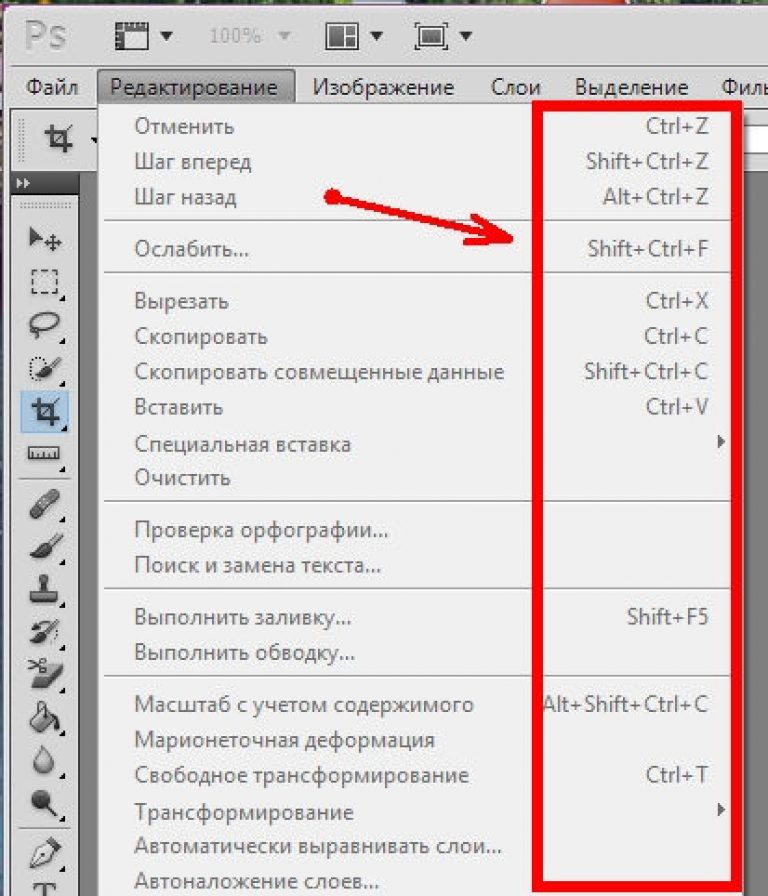
Keyboard shortcuts
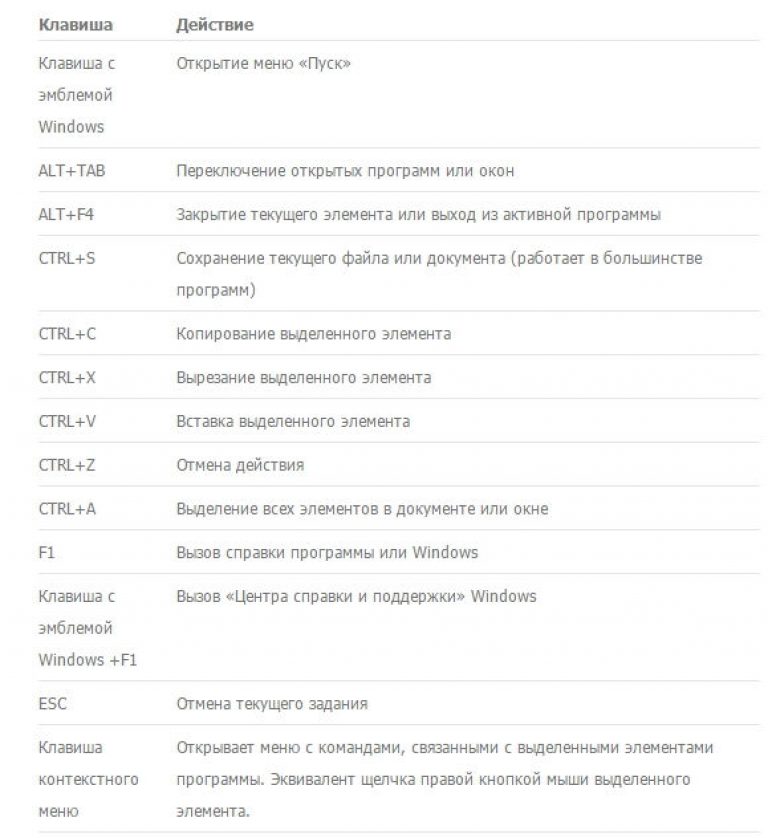

Envelope accent and umlaut
The punctuation keys are located in two places: - below, to the right of the central part of the keyboard ,. - at the top of the keyboard. They are achieved in two stages. It is used on laptops. It allows you to access commands created in a rectangle or displayed in blue.
To make a print on the screen. Computer shortcuts are often unknown. Not regretting reading long texts in problematic search keyword... Russell, in short, deals with usability and what people want. Depending on the browser you are using, some shortcut keys appear at one point rather than another, and the position of the keys is far from negligible. Suffice it to believe that usability, thanks to the contributions of Jacob Nielsen and his ten heuristics, has become a veritable bible in the world of computer science.
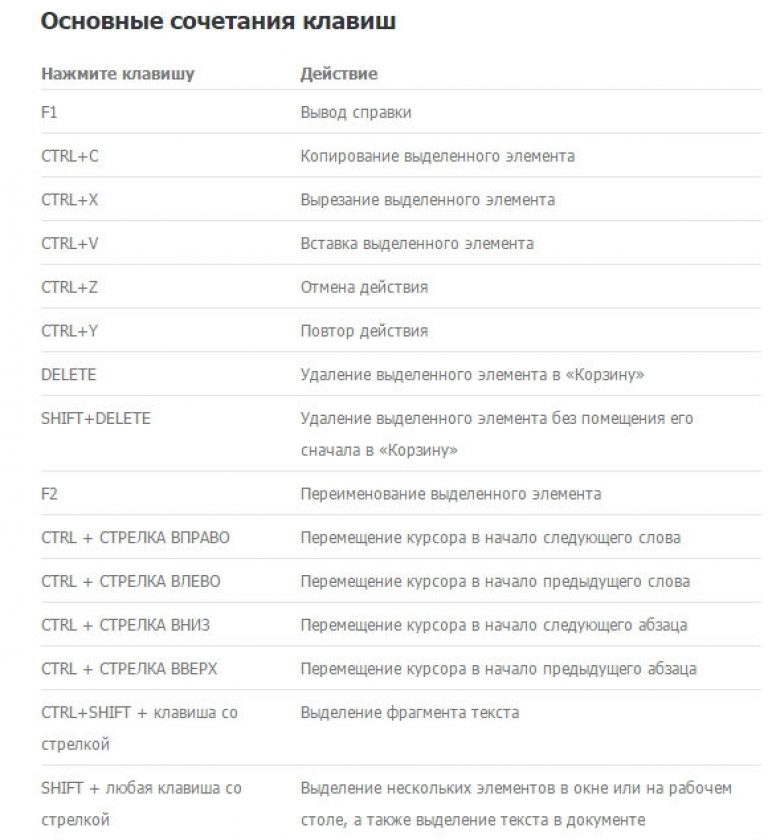
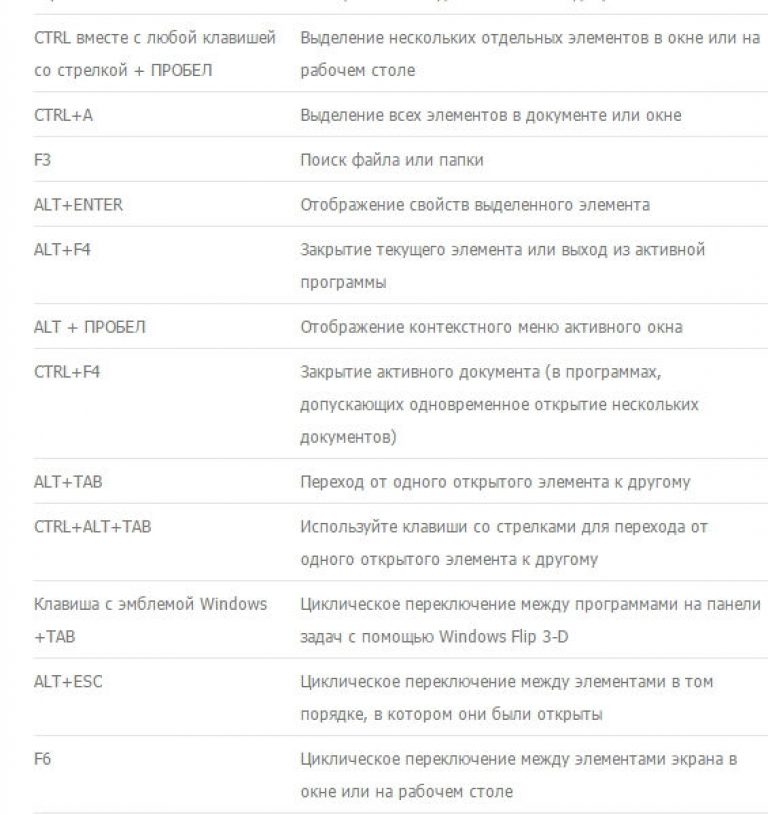
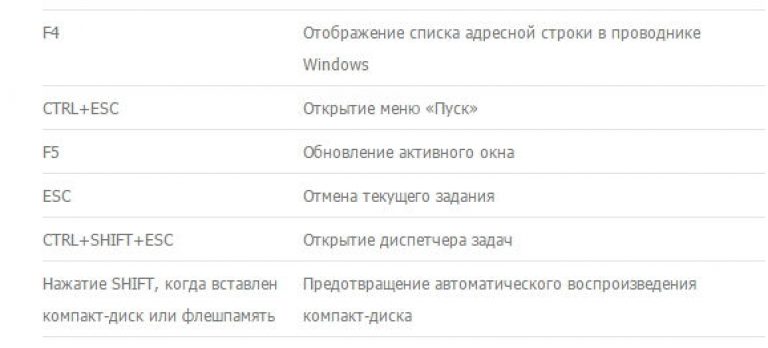
Usually such combinations are indicated with the sign + (plus). For instance, Win + E... This means that you must first press the key Win and then the key E.
Letters mean Latin, no matter what layout you have at the moment.
Essential keyboard actions
- In order to switch to another language, it is necessary to press simultaneously the key Shift + Alt or Shift + Ctrl.
- To print capital (capital) letter, you must hold down the key Shift and click on the desired letter.
- To print all text only in large letters, press Caps Lock and let it go. And to switch to small letters again, press this key again.
- In order to print a comma, you must press the key Shift and a semicolon key. They are usually located next to each other on the right.
- Point in English layout located next to, to the left of the point of the Russian layout.
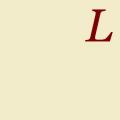 Linkedin - what it is and how LinkedIn can help you find your dream job Linkedin professional network
Linkedin - what it is and how LinkedIn can help you find your dream job Linkedin professional network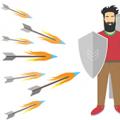 DDoS protection: DDoS GUARD - your secure hosting
DDoS protection: DDoS GUARD - your secure hosting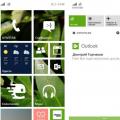 Windows smartphones can now be updated using a PC
Windows smartphones can now be updated using a PC